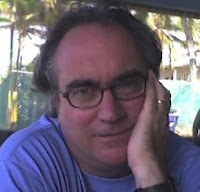The Wittgenstein of the Tractatus, with his "atomic", "picture" theory, was still seeing the issue as one of the way language and mind represent the world. He had the idea that what pictures represented was not so much individual things as relations between individual things, or what he called "facts." Language captured (or ought to capture) logical relations. His fascination with the relationship between logic and pictures is very High Modern, like one of those Cubist paintings by Braque or Picasso.
In the later Philosophical Investigations Wittgenstein moves away from representational ideas altogether. The fundamental insight was that an authentically naturalized account of mind and language would have to have done with intentional and semantic properties altogether. This is a kind of behaviorist/functionalist reading of Wittgenstein: there are no such things as symbols. There is nothing "under the surface" of language (no meaning) and thought (no "inner space").
It is important to see the continuity between the earlier and the later work. The idea that consciousness and qualitative experience (and "good and bad," for example) were not possible objects of representation is common to both books, and an exploration of the limits of language is an organizing principle of both. Sometimes people who like the Tractatus dismiss the P.I. and vice versa, but that is a mistake.
Wednesday, February 6, 2008
Subscribe to:
Post Comments (Atom)



No comments:
Post a Comment